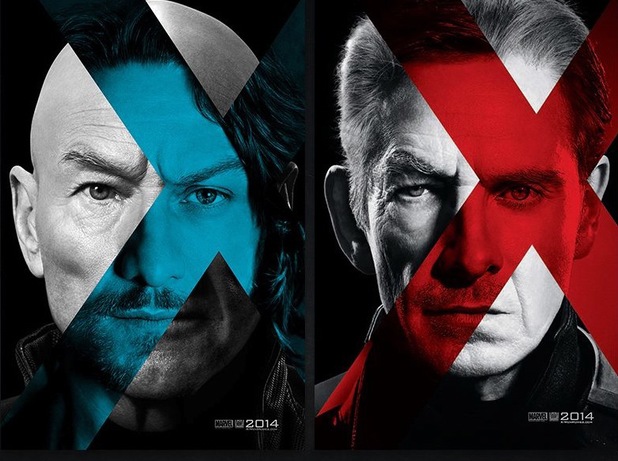
The teaser posters for next year's 'X-Men: Days of Future Past' are interesting in their attempt to combine the faces of both actors for each of the characters of Professor X and Magneto. The general concept behind the new film is that it features the casts of both the original X-Men trilogy and the semi-prequel/reboot 'X-Men: First Class', and I believe that this series of posters demonstrates this well enough. The design of these posters has background of the image featuring the actor who plays the older version of the character (Patrick Stewart in the case of Prof. X and Ian McKellen with Magneto) in black and white with part of their faces obscured by the shape of an x that contains the face of the actor of the character's younger counterpart (James McAvoy and Michael Fassbender, respectively). Applause must given to the designers of this poster who have clearly achieved a lot by combining the faces of actors who in real life only bear slight resemblance, yet in this poster all of their facial features match up - for instance their jaws, their lips and their hairlines (well not in the case of Patrick Stewart). Both characters are in close-up with their eyes aimed directly at the audience, with a slight feeling in this poster that they are 'recruiting' you to their cause by the way they are looking.
Each character is given a distinct colour scheme - Prof. X has a blue x, while Magneto's x is red - with the obvious difference being that each character represents a different side of the good and evil scale, even though the synopsis of this film suggests that a new threat unites both characters together, which is not something that the posters are suggesting with their use of colour. Other than the closeup images of the lead characters there is little to be found in the rest of this poster other than the year of release which is 2014 and the movie studio logos, in this case Marvel and 20th Century Fox. No cast or crew credits appear and, unless my eyes deceive me, there appears to be a Twitter hashtag containing the film's title. Similarly to previous posters I have analysed, the studio is aware of the growing popularity of social networking and so are capitalizing it by encouraging (albeit with a tiny font at the bottom) by suggesting audiences should tweet about the film. Director Bryan Singer is a known user of Twitter and in fact has been sharing with millions of Twitter followers the development of the film, from casting to production photos, who presumably will then share these to their own followers.

